- Share
- Like
- Tweet
- Digg
- Tumblr
- VKontakte
- Love This
- Odnoklassniki
- Meneame
- Blogger
- Amazon
- Yahoo Mail
- Gmail
- AOL
- Newsvine
- HackerNews
- Evernote
- MySpace
- Mail.ru
- Viadeo
- Line
- Comments
- SMS
- Viber
- Telegram
- Subscribe
- Skype
- Facebook Messenger
- Kakao
- LiveJournal
- Yammer
- Edgar
- Fintel
- Instapaper
- Copy Link
Firm Chevalier Morales Architectes transformed the old Lachine Borough library in Montreal, Canada, into a 21st century state of the art facility. Winning an architectural competition in 2011, the architects were asked to expand, redesign and bring to compliance the library, dating back to 1974. The new building does not only meet today’s needs and standards, but it explores potential improvements and expansions for the next 20 years.
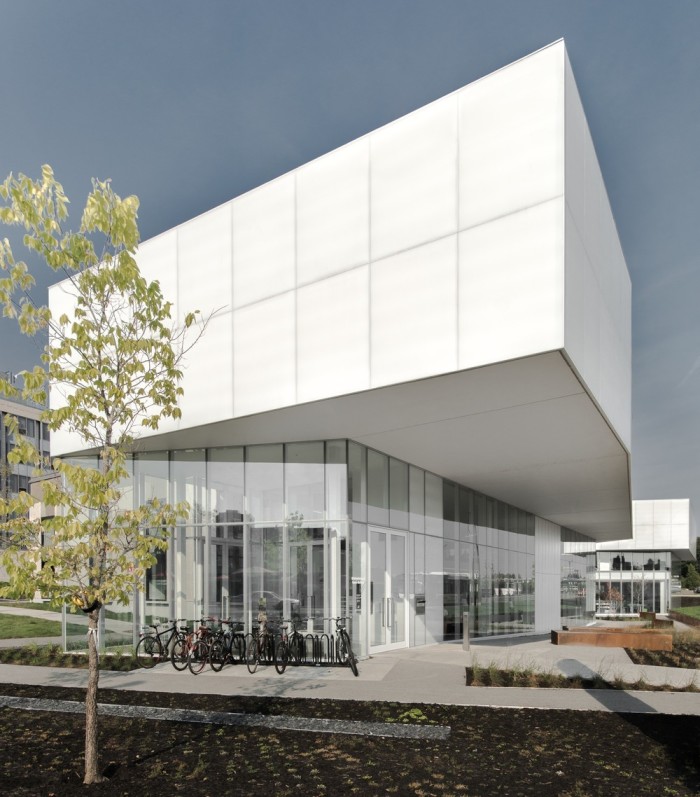
Image © Chevalier Morales Architectes
Chevalier Morales imagined what the library and its neighbourhood could become, in 20 years, if the densification, greening and transportation improvement principles mentioned in the urban plan were achieved and implemented. The concept proposed possible solutions for the year 2031.
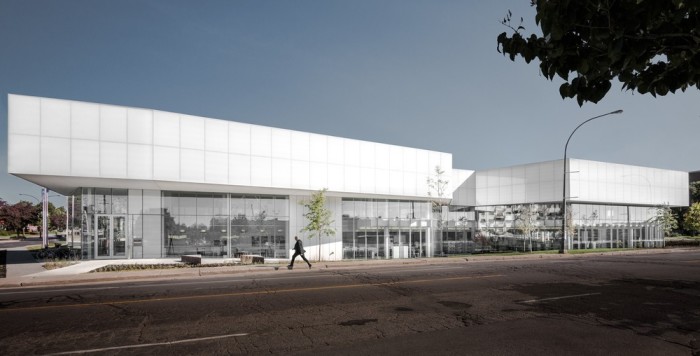
Image © Chevalier Morales Architectes
By developing this long term scenario, the architects managed to incorporate certain program functions that will reduce cost and environmental impacts, without decreasing the library’s space quality. One of the features incorporates light inlets, strategically placed to take into account potential expansions.
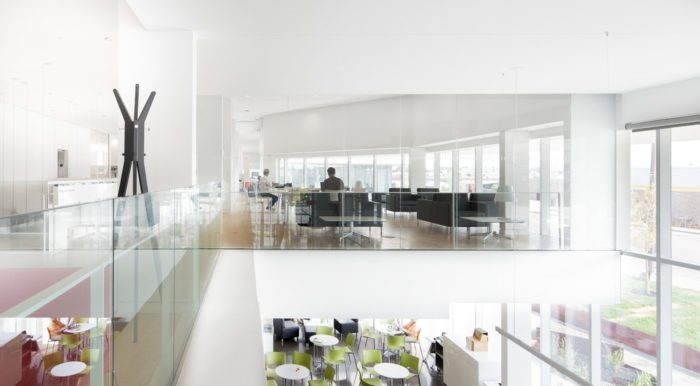
Image © Chevalier Morales Architectes
The design approach seeks to be global and evolutionary; it proposes paths to address real societal issues instead of lingering on immediate issues. The 21st century library is imagined as a pivot for a dense and dynamic area were many mixed daily activities occur.
– Chevalier Morales Architects
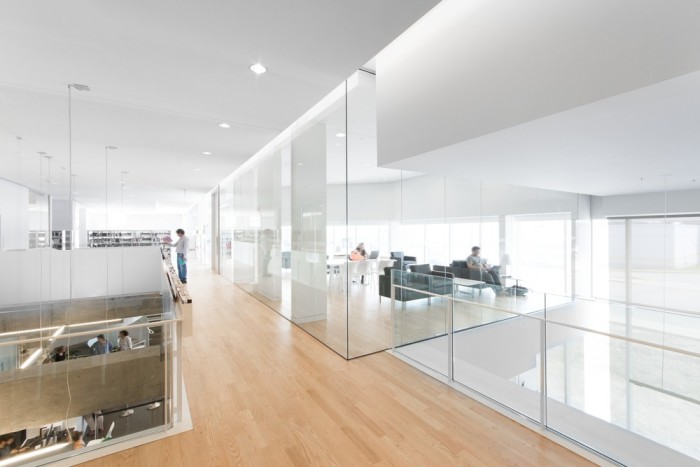
Image © Chevalier Morales Architectes
Located within the neighbourhood’s commercial space traffic, the design takes advantage of the residents’ daily lifestyle. One of the two entrances to the library was positioned in close proximity to the cafe, to create a complete user experience, making it now possible to eat and drink in all areas of the library. The cafe’s patio extends onto the intersection, making the library a central hub for the neighbourhood.
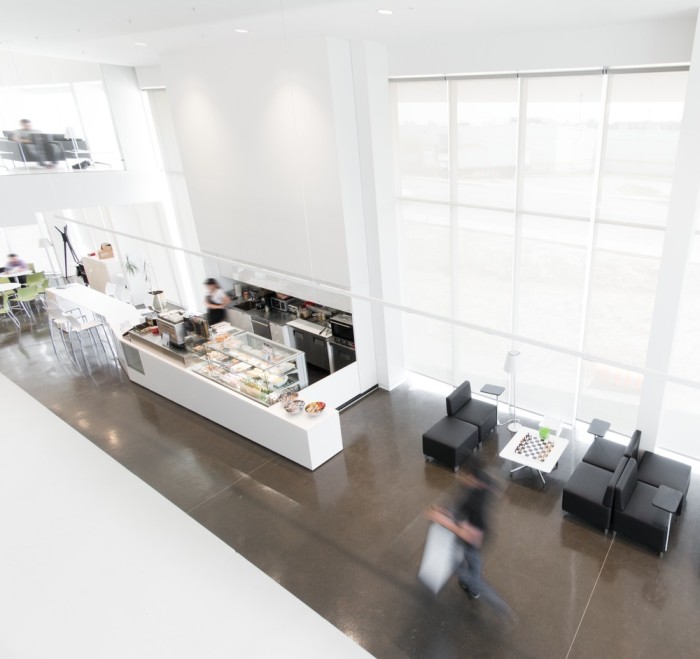
Image © Chevalier Morales Architectes
Although its purpose has quickly evolved in recent years with the arrival of new technologies and the evolution of librarian’s traditional roles, the loan counter, greatly reduced in size, remains a focal point of the library as a privileged interaction location. The loan counter being positioned on the main level, in the heart of the building to allow it to be visible from all areas, makes it possible to see the entire interior space as well.
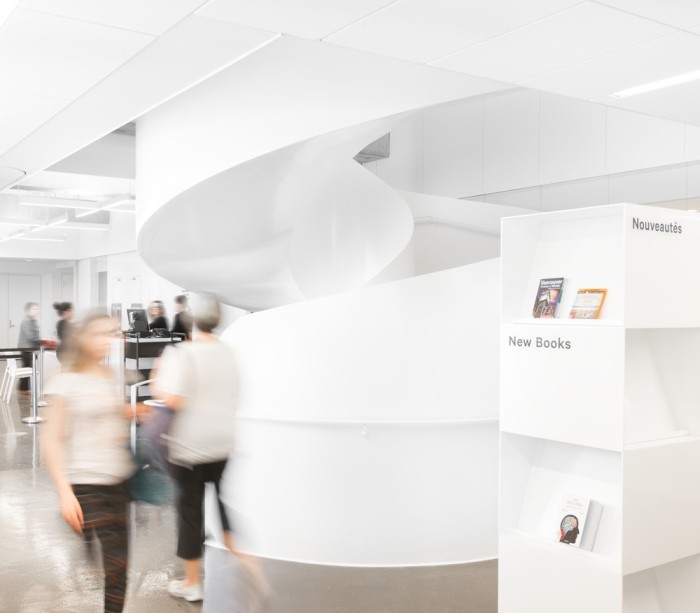
Image © Chevalier Morales Architectes
At the bottom of the gentle gradient ramp, in front of the café, close to vertical circulations and to the youth library entrance, the loan counter becomes the ensemble’s organizational pivot. It consists of multifunctional and adapted sectors that exude an impression of accessibility and openness.
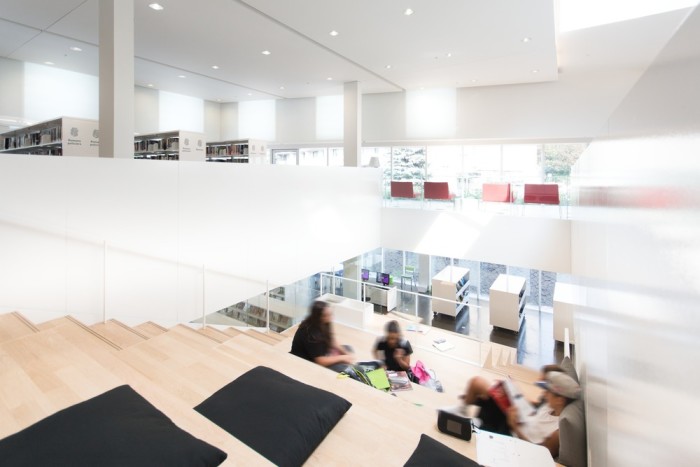
Image © Chevalier Morales Architectes
Large open spaces with copious amounts of natural light create plenty social hubs. The large wooden staircase doubles as seating, overlooking the minimalist interior. The second floor is also accessible through a large sculptural staircase, as well as an elevator.
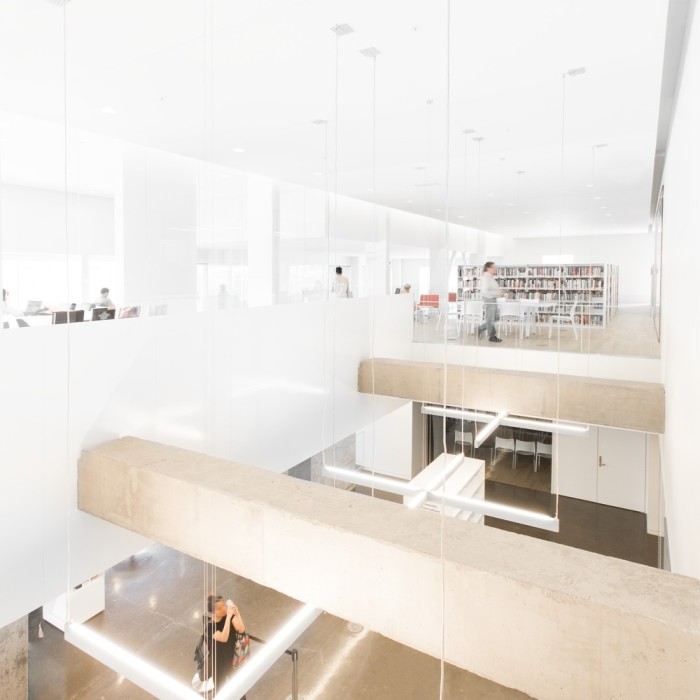
Image © Chevalier Morales Architectes
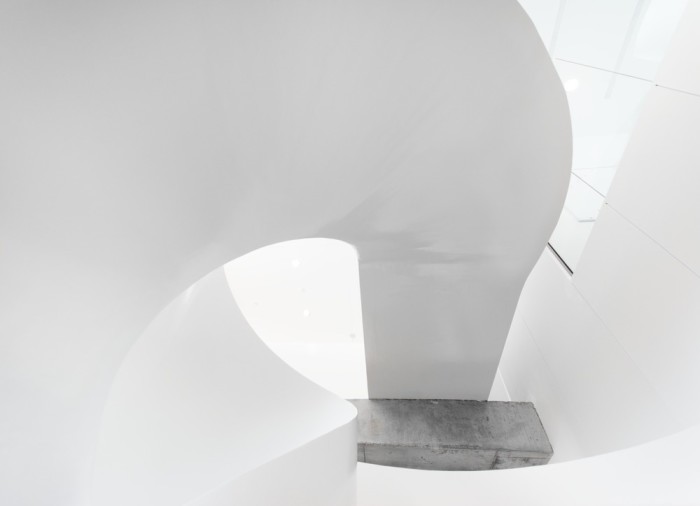
Image © Chevalier Morales Architectes

Image © Chevalier Morales Architectes
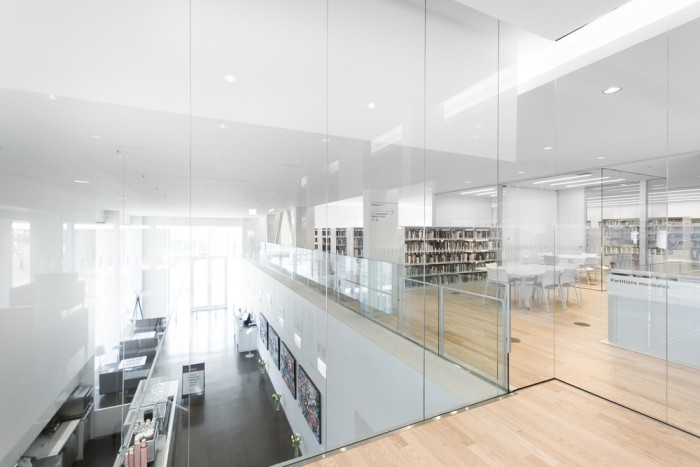
Image © Chevalier Morales Architectes
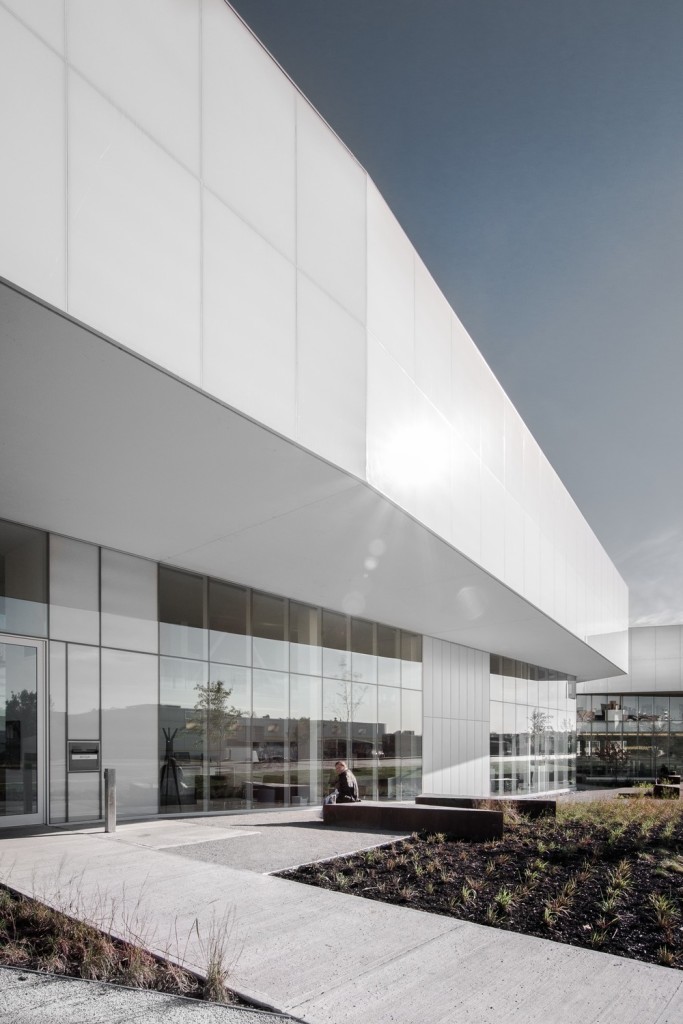
Image © Chevalier Morales Architectes

Image © Chevalier Morales Architectes
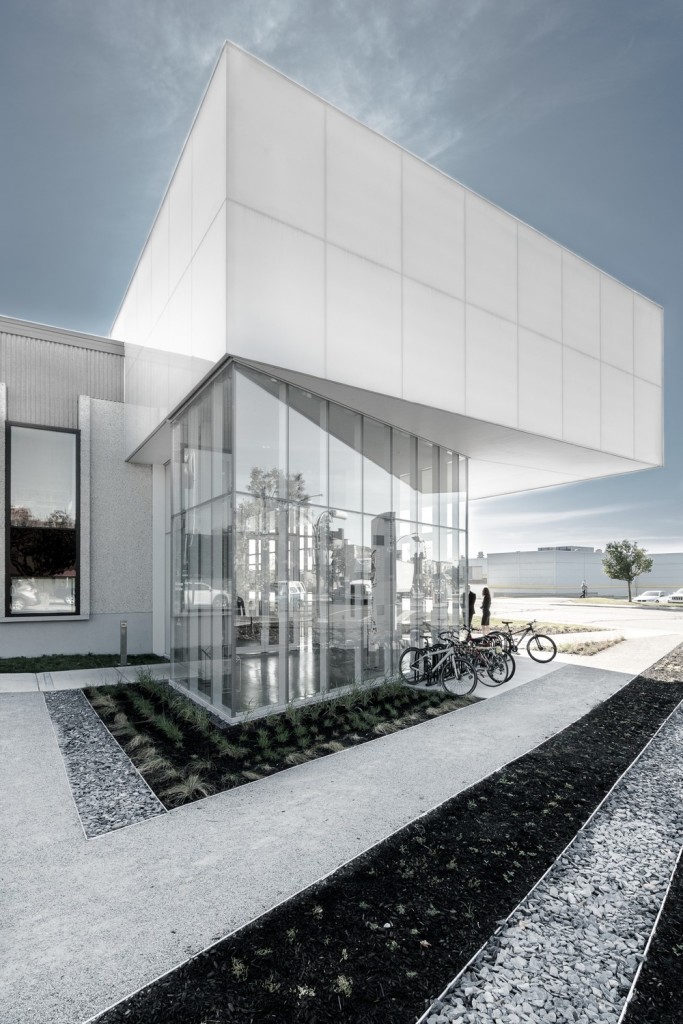
Image © Chevalier Morales Architectes
The project aimed for a LEED certification as well as to be an example of sustainable development principles.
Facts:
Official project name: Bibliothèque Saul-Bellow (Saul-Bellow Library)
Location: Montréal, Québec
Client name: Ville de Montréal (City of Montreal)
Architects: Chevalier Morales Architectes
Project managers: S. Chevalier / S. Morales
Design team: S. Chevalier / S. Morales / J. Rondeau / P. Littée / C. Giguère / A. Massé / S. Barrette
Engineers: Dessau, Martin Roy & associés
Landscape architects: Civiliti
Contrators: Gamarco
Photography: Chevalier Morales Architectes
Project surface area: 2650 m²
Cost of work: $13 M
Project end date : Fall 2015
*All images and information courtesy of v2com.
